We are the first golf club in Scandinavia
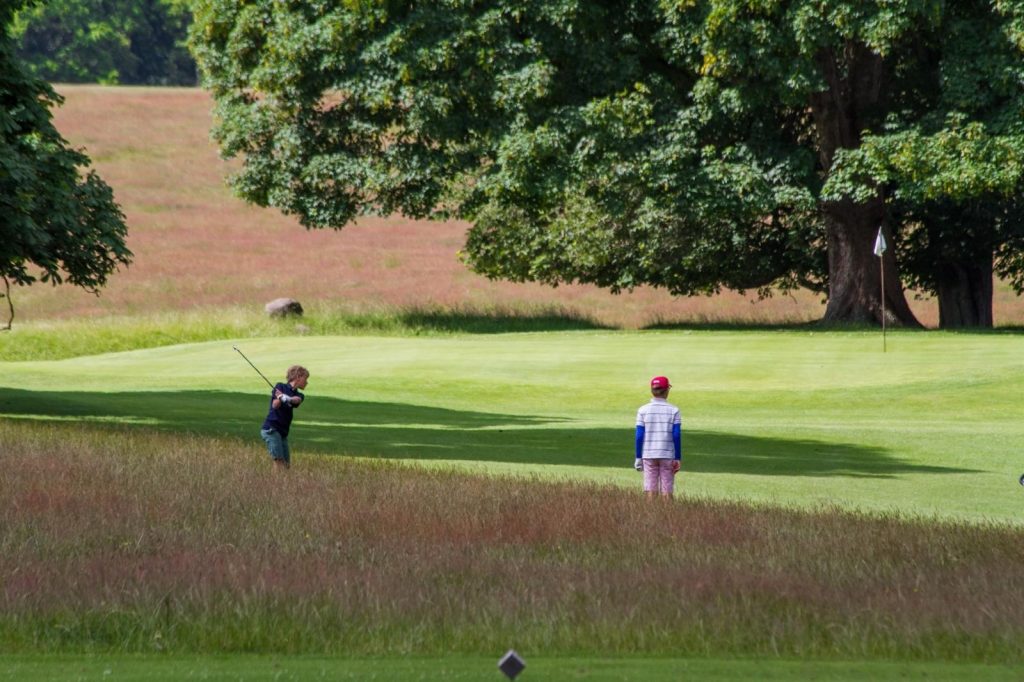
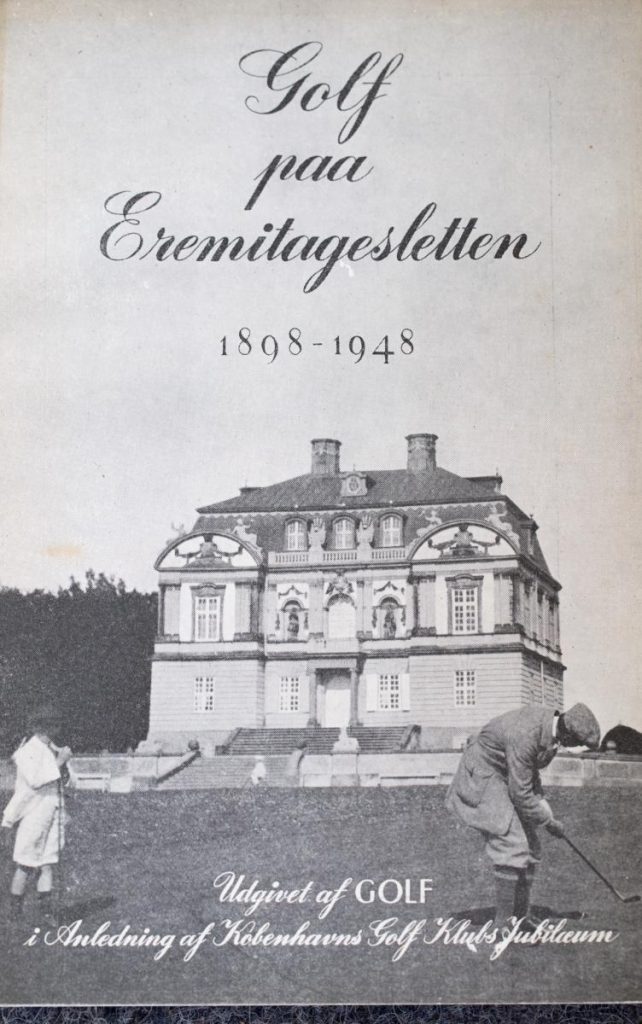

What and Who We Are
Placed in the unique and historic plain of Hermitage, The Royal Copenhagen Golf Club is the first golf club in Scandinavia. Member or guest, the course is an adventure for us all, bringing great golf pleasure and keeping you in good shape since in this dear garden, we can play all year around.
Being close to the big city, still peaceful free of noise in this protected area. Enjoy the view over the Hermitage from the terrace and with friends and family experience the history of golf in the first golf club of Scandinavia.
The course is designed for handicap golfers at all levels, with the strategic in the play prioritized as well as the esthetic. Surely, you will be challenged at whatever level you play golf. While in all seasons offering you a fabulous experience in nature.
Taking up golf easily ends up as a lifelong love affair, soothing your soul, gives you a good health, and the opportunity of a greater social network, since we can all play with each other. Golf has no age limits. The atmosphere in the club is pleasant, connecting us to new friends when we enjoy the 19-hole terrace after practice and match.
Learning to play golf is fun and with the help you receive from members, coaches and the admin team, you are quickly off to a good start. Royal Copenhagen Golf Club offers joy and network for new members, making you feel welcome from your first day, surrounded by nice and friendly people.
The royal copenhagen golf club
Honorary members
His Majesty King Frederik

Her Majesty Queen Mary
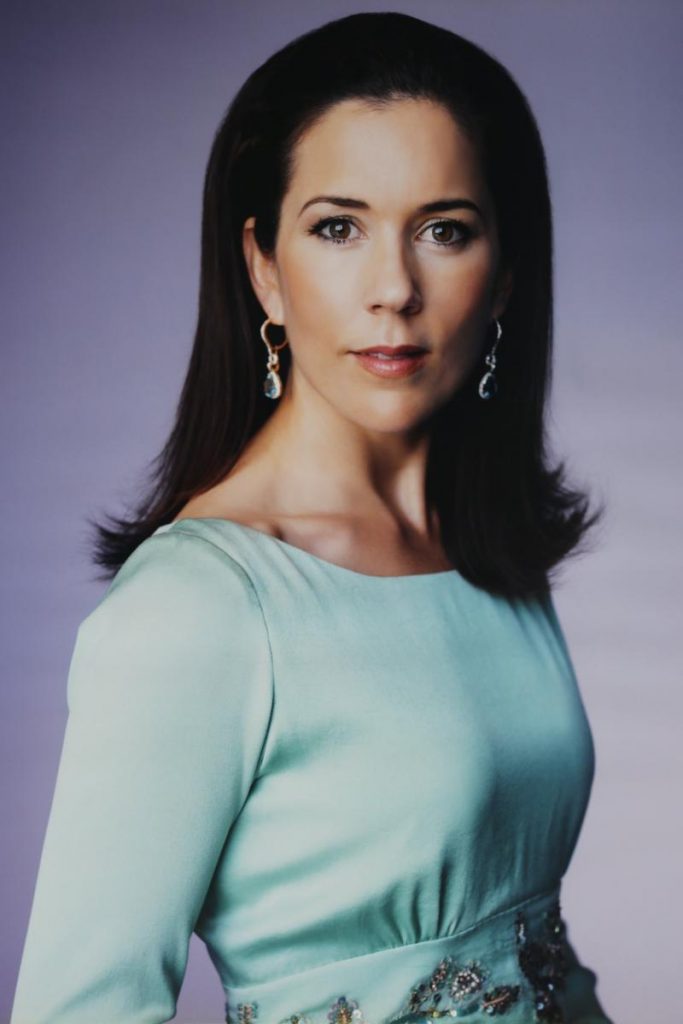
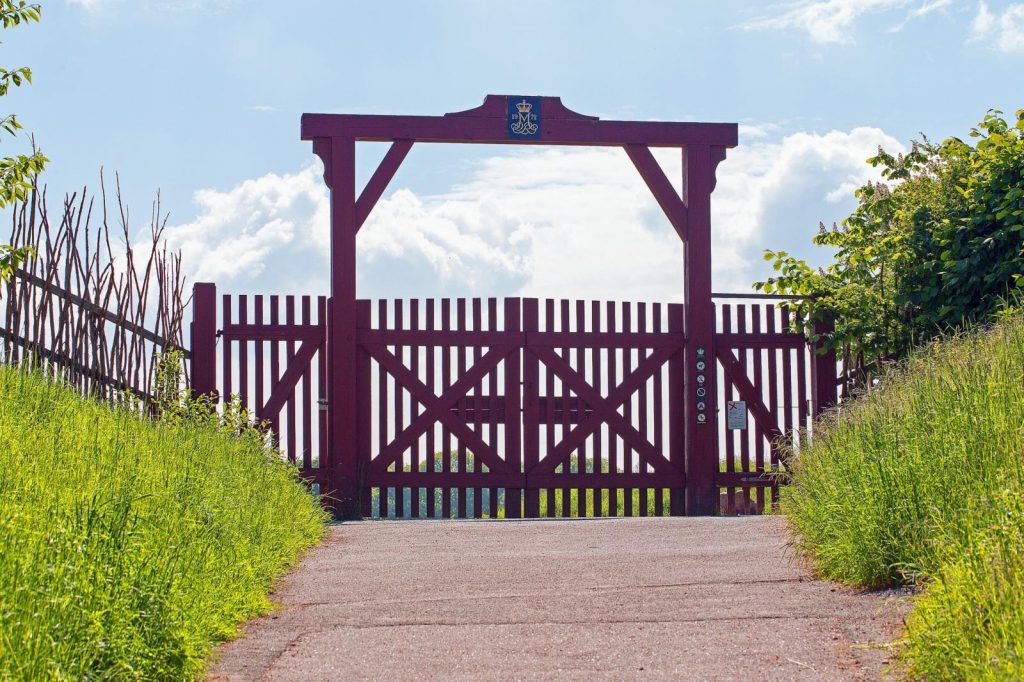
UNESCO World Heritage Site Dyrehaven
The forests of Northern Zealand are nature of beauty and culture. The forests are created as a scenario for the greatest of all hunting: The authorithan King’s par force hunting.
Created by Christian the 5th in the 1670’es and 1680’es, the landscape for the hunting emphasizes the King’s control of nature’s wildlife. He is the author of this play, shining as a great king, the ruler of both man, animals, and nature.
The King establish a system of hunting paths as he is taking advantage of the best mathematic science of his time. Kilometers after kilometers of hunting paths are constructed. Carving and crossing their way through Jægersborg deer garden and forest, it’s a tremendous job. In this way the King demonstrates excellent engineering skills, besides and not to forget, his power and wealth.
The hunting paths make the par force hunting possible. Seen from today’s perspective, a hunting form of bestiality. But in the 1600 century it was popular and fashionable in Denmark as well as across Europe. Today, the paths and roads are to the benefit of the many guests enjoying nature.
The stage is set for the par force hunting with the King taking the lead character. The King invites for hunting. During the hunt, experienced hunters and their dogs chase down a chosen crown deer for hours. The King ends the deer’s life, stabbing into its heart a spear or a dragger, a so called hirshfænger.
UNESCO World Heritage Site covers the whole landscape of par force hunting in Northern Zealand, a project financed by five North Zealand based communities, The Green Museum and Naturstyrelserne Hovedstaden og Nordsjælland, together they manage the tasks needed to become and remain a UNESCO World Heritage Site.
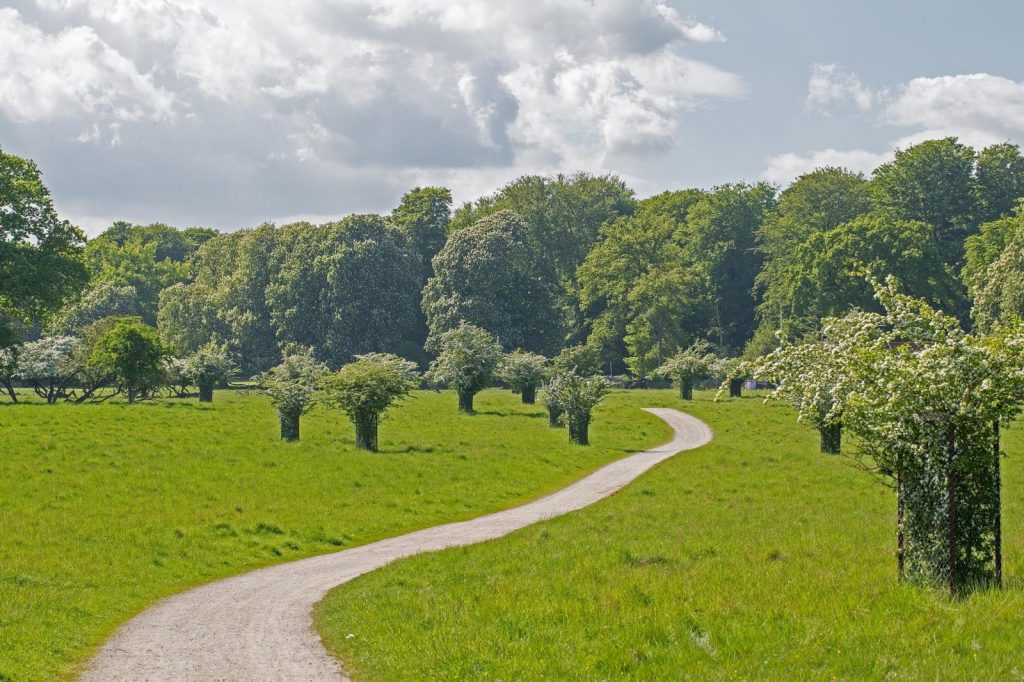
The Road Where We Say Hi
When we enter through the red gate into Dyrehaven, something happens. We walk away from noise and disturbance and into wellbeing and the kindest thoughts. We entry into this protected area.
On our way on the path, we pass each other, and we say hi.
“Don’t ever stop your longing for a walk. Every day, I walk for my well-being, I walk away from any illness. My greatest thoughts came to my mind when walking and I know of no thought that heavy, that you can’t walk away from its burden.” (Soren Kierkegaard, 1847)
THE GOLF IS BORN IN DENMARK
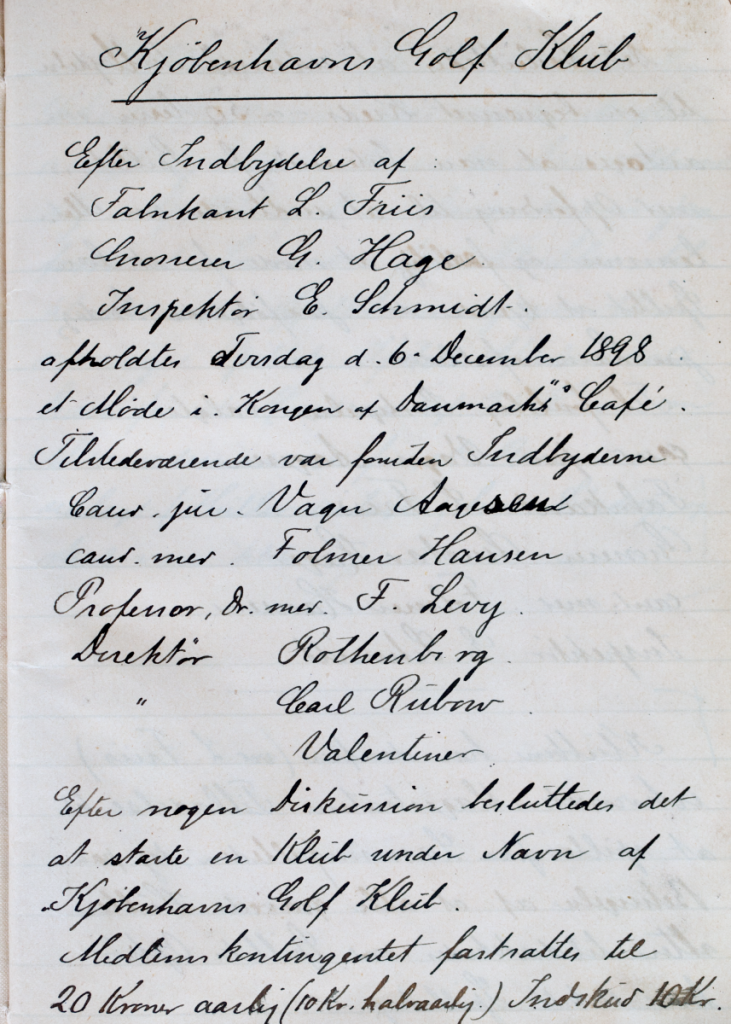
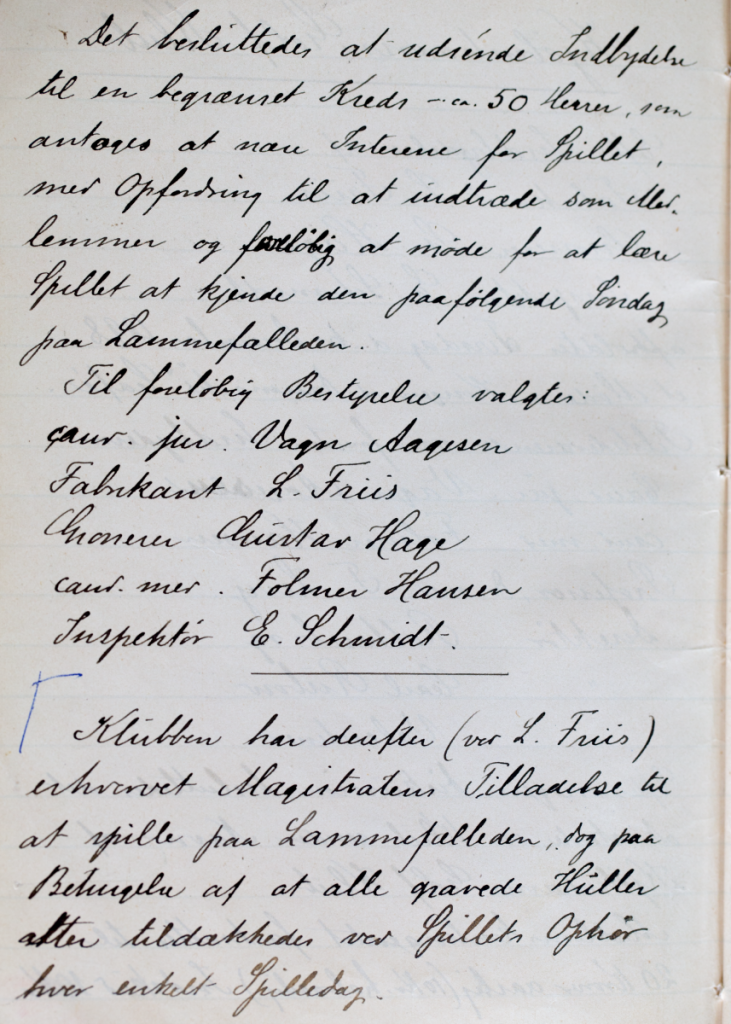
Board minutes of Copenhagen Golf Club 1901
Charles R. Jensen shows golf on the Hermitage Plain to a number of guests. Charles recommends the guests that they gather in a club. This will be the start of Scandinavia’s first golf club – The Royal Copenhagen Golf Club. The club was formed on December 6, 1898 in Copenhagen.
The archives of the club is lost during the second world war. One June night in 1944, the clubhouse is bombed by a Schalburgtage group. All material in the clubhouse burns up. A bit of material outside the clubhouse is saved, i.a. a board protocol.
The minutes of the board of directors state: “…It was decided to send out an Invitation to a limited circle – about 50 gentlemen, who are supposed to have an interest in the game, with an invitation to join as members and for the time being meet to get to know the game the following Sunday at Lammefælleden.
The following were elected to the interim board:
cand jur Vagn Aagesen
Manufacturer L. Friis
Wholesaler Gustav Hage
cand medicine Folmer Hansen
Inspector E. Schmidt
The club has since (by L. Friis) acquired the Magistrate’s Permission to play at Lammefælleden in the city of Copenhagen, however, on the condition that all dug holes were covered again at the end of the game every single game day ”.
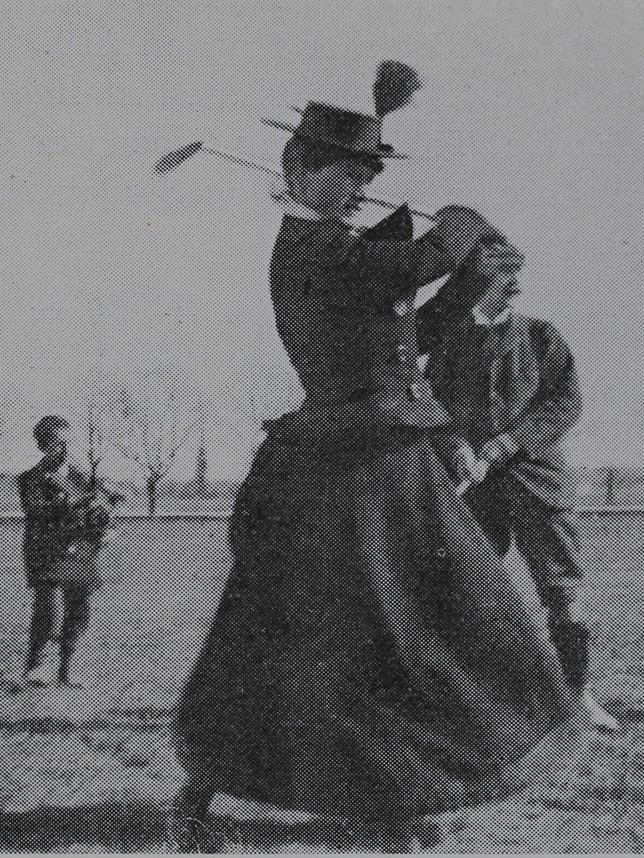
Ingeborg Scavenius wins Denmark's first golf match in 1899
The newspaper Dagens Nyheder writes on Monday 10 October 1898 about how golf is played: “Golf is played by 2 or more people, each with their own ball – a white ball the size of a small chicken egg. Players also use clubs that have a rather thin cane shaft and end in a bent vertical grooved plate, of iron or wood, and of different shape, according to which the ball must be scraped up from a hole or struck from a free place, whether it is to be struck long or short, etc. An ordinary player can make do with 3 clubs ”
The first golf match in Denmark is held by KGK. It is played on Sunday 23 April 1999 on a course at Lammefælleden. The course is 8 holes and is played through twice. The ladies are participating as well. The winner is Ingeborg Aagesen, in a total score of 109 strokes. Meaning about 7 strokes per hole. A lady wins the first Danish golf match.
Later that year, a match is played out on the Hermitage Plain. The first match on the Hermitage Plain will be played on an 18-hole playing field. However, the playing field course is changed to a nine-hole playing course.
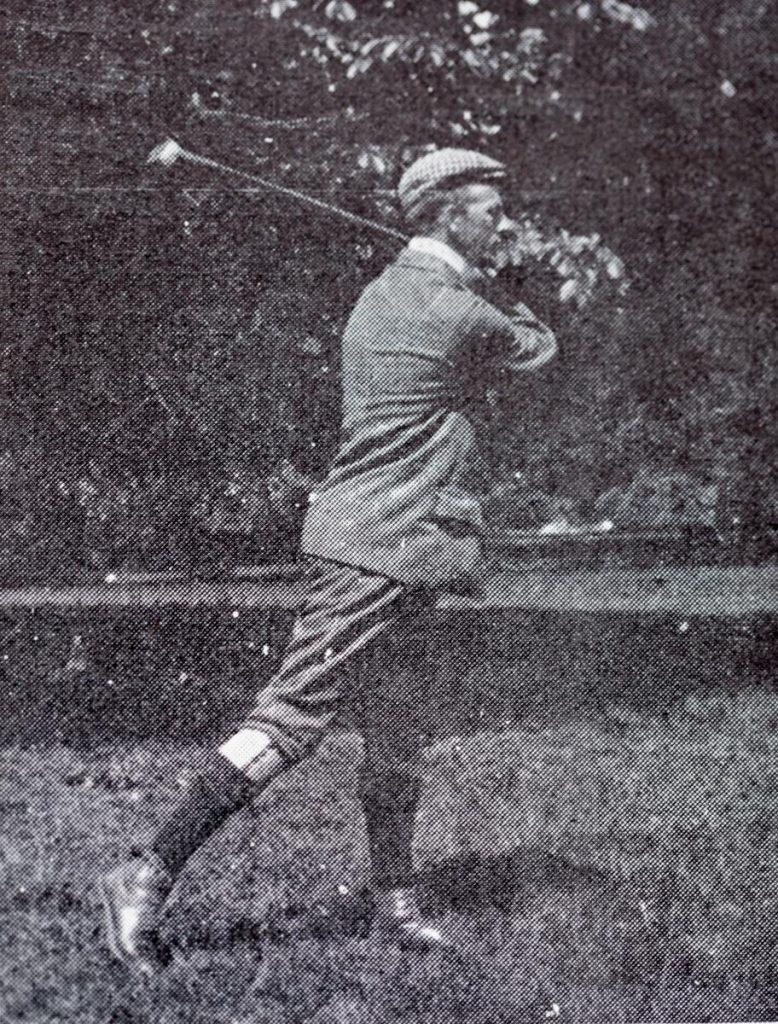
Charles R. Jensen shows golf shots on the Hermitage Plain 1898
The newspaper “Dagens Nyheder” writes in an article, Monday October 10th 1898, and mention among other things following:
The man’s name is Jensen, is Danish by birth, expatriated to America, where he learned the game very quickly and trained as a Professional, i.e. Teacher at different Golf Clubs of New York.
Mr. Jensen showed on the Hermitage Plain a small circle of sportsmen how to hit a golf ball. And he did it really nice. With a quick agile wrist motion, he alternately caused the ball to fly very considerable distances and to slowly sneak down into its hole, showing how finely and accurately the game can be operated.
With regard to playgrounds close to the city’s area, he believes that the Hermitage Plain is for the time being the best. The area closer to the city where they currently played, could probably be used, but as long as the game is new, it is not for spectators who would “like to join”.
He speaks about the future of the game in this country with a lot of skepticism, knowing how long it will take before any new sport gains a foothold. By the way, he intended to stay here at home for the time being, especially if he could get Students or become a Club Teacher in Golf.
So, if anyone wants to learn it, there is now an opportunity. Written by Henry ”
KGK subsequently notes in its board minutes:
“The club has also hired Mr. Charles R. Jensen, who during a multi-year stay in America has trained in the Game and among other things. acted as a professional Teacher at several clubs, to arrange the Playground and provide Teaching in the Game. According to the agreement, he must, for a fee of 25 kroner a month, ensure that the course is laid out (holes laid) every Sunday, and must be active…”
The playing field, as it is called, must be large. The holes are excavated either in a circle or in a row. Each hole is 5 inches in diameter and 5 inches in depth. The distance between the holes is about 400 meters.
Charles R. Jensen becomes Copenhagen Golf Club’s first coach and head greenkeeper.
THE OPEN DESIGN
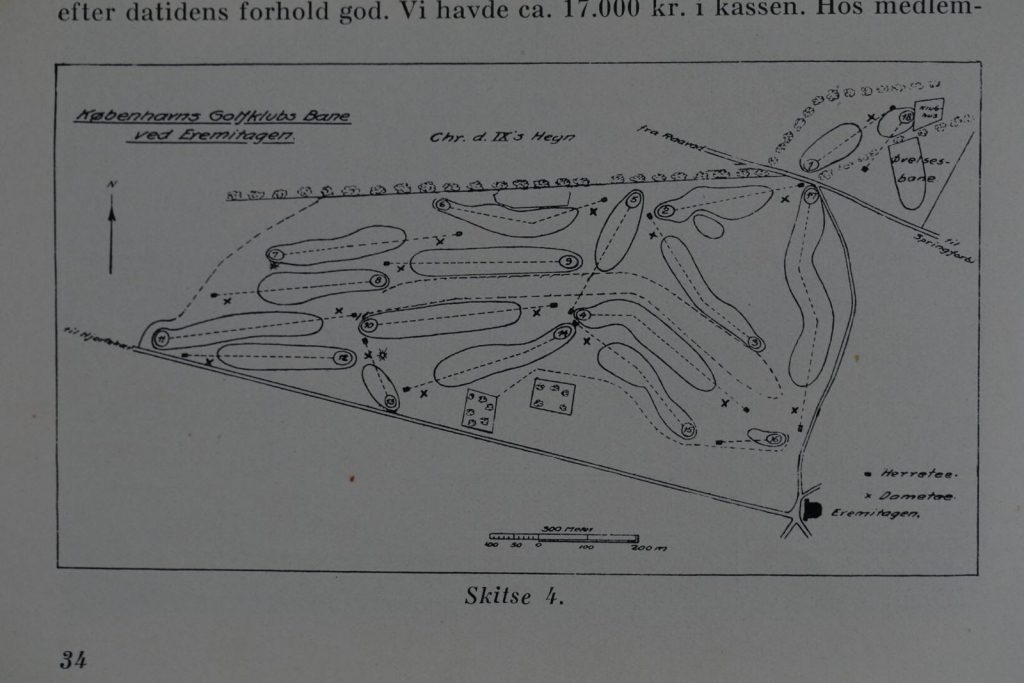
Denmark's first 18 hole golf course
The original drawing of the golf course, shows that the course is largely laid, as when the course was ready in 1928.
The first playing field was built in Fælledparken in Copenhagen in 1898. This is not a real golf course. It’s called a playing field. The course has eight holes and is used for a few months. Every Sunday the same method. Eight holes are dug out, and after play, the eight holes are covered again.
In the autumn of 1898, people became interested in the Hermitage Plain. For several reasons. The open and gently undulating landscape on the Hermitage Plain is suitable for golf. In addition, the grass turf on the Hermitage Plain is unique. The king is the reason. He moved the last Stokkerup peasants away in 1670. After this the grass carpet spread. Only disturbed by grazing deer and riders on horseback. The deer prevent the Hermitage Plain from going into the woods, eating the young beech shoots.
KGK therefore asks the Dyrehaven authorities in 1899 for permission to play golf on the Hermitage Plain. They get the message from the forestry that everyone has access to the plain. This is the start of the first playing field on the Hermitage Plain in 1899. The playing field is located in a triangular area: Between the Hermitage Castle, Hjortekærvej and the road to Fortunen. The club periodically changes the course of the playing fields.
The story of Denmark’s first real 18-hole golf course begins in the 1920s. KGK misses a real 18 hole golf course. Chairman Frederik Hegel proposes to build a real 18-hole golf course north of Hjortekærvejen. The area on the north side of Hjortekærvejen is better suited for a golf course. A more undulating landscape with fewer tubers.
Denmark’s first 18 – hole golf course is inaugurated on 4 May 1928 on the Hermitage Plain.
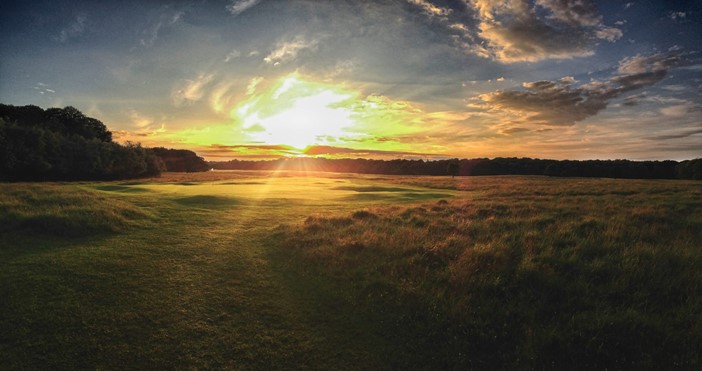
Course design inspired by The Open
KGK wants a course in classic English style, and contacts a well-known English course architect. The course architect arrived from England in 1926 and designed the course in 14 days. Two years later, Denmark’s first 18-hole golf course is ready. The course has narrow fairways, thick rough and solid greens. A style known from The Open Circle golf courses in the UK.
The Open design is increased during a major restoration of KGK’s course. In 2008, KGK contacted the Scottish course architect Tom Mackenzie, from the company Mackenzie & Ebert. The company works i.a. on seven out of the ten Open Circle courses. Tom both designs and performs the restoration of the KGK golf course on the Hermitage Plain. The crew and machines are the same as Tom uses on The Open courses in the UK. The restoration takes place in the two winters of 2008/2009 and 2009/2010.
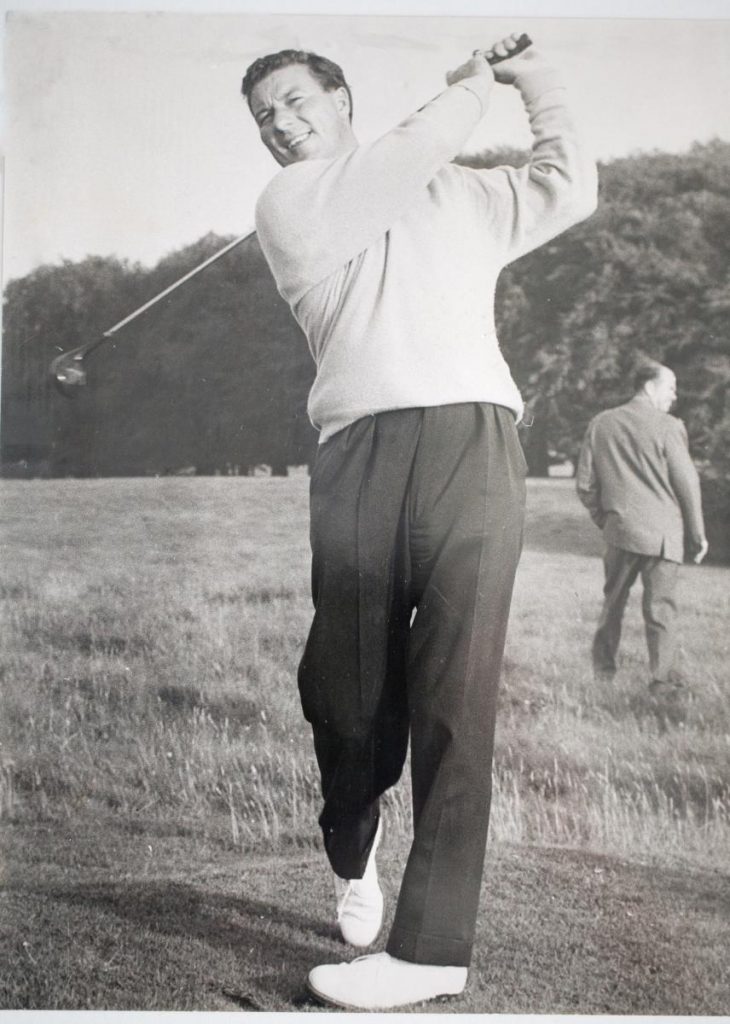
Five-time The Open winner Peter Thomson plays at the Hermitage Plain
In the years 1946-1973, Copenhagen Golf Club holds a tournament for professionals – Copenhagen Cup.
Famous foreign professional golfers come and play the Copenhagen Cup. They use the tournament as a warm-up to play The Open later in the summer. The similarity between the golf course on the Hermitage Plain and The Open courses provides the same style of play. The Copenhagen Cup is therefore a good warm-up for The Open.
Peter William Thomson is the greatest of these professional golfers. Thomson was born on the outskirts of Melbourne, Australia in 1929. He won three Majors in a row in the 20th century. As the only golfer ever. The three victories lie in 1954, 1955 and 1956. He further wins The Open twice in 1958, and 1965. In 1965 he defeats Jack Nicklaus and Arnold Palmer. Thomson qualifies for the last time for The Open at the age of 49.
Thomson wins ten national championships in his career. He played on the PGA Tour from 1953 to 1954 and again in 1956. He won the Texas International Open in 1956. Thomson also had a successful senior career. He wins nine times on the Senior PGA Tour in the United States and ends up at the top of the money list. He was inducted into The World Golf of Fame in 1988.
Peter Thomson dies in 2018 at the age of 88, leaving four children.
GOLF AT THE HERMITAGE PLAIN
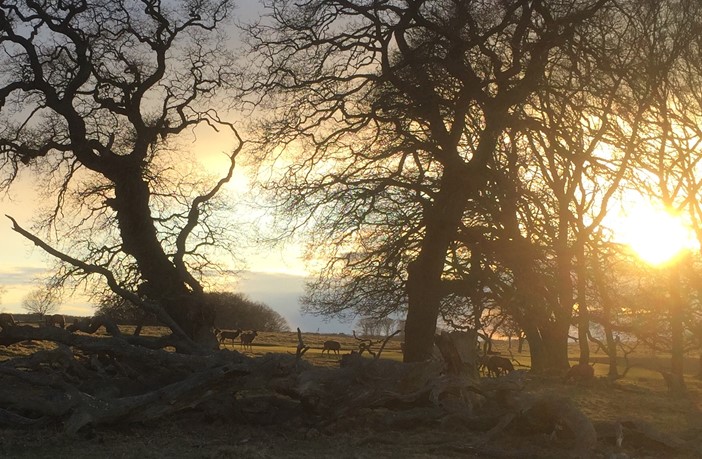
By the King’s order: For every fallen oak, a new to be planted
The deer garden is rich on ancient oak giants, over time formed as crooked sculptures. Several of them have been given a name. The oaks can live for up to a thousand years, pending they have the right conditions such as space and sunlight which is exactly what the deer can provide for them. As the oaks let the sun through the leaves, the deer freely graze under the trees. The deer eat the beech shoots, that otherwise will grow and over time shadow for the oaks.
Two of the oldest oaks can be found near the golf course. At the five-road-cross Northeast of the Hermitage stands the oak, where King Christian the 5th was kicked by a wounded crown deer during a par force hunt in 1698. The King never recovered and died the year after. The oak got its name after him and is known as Christian the 5th’s oak.
The Englishman’s oak near the Hermitage Castle almost died some two hundred years ago. But one of the soldiers, who participated in the siege of Copenhagen in 1807, when the British camped their army in the deer garden, confessed before he died that he took part in the assassination of the regiment’s cashier. Robbing the soldiers sold, they buried the moneybox near the characteristic old tree Northeast of the Hermitage Castle.
The confession started a true treasure hunt and with the digging around the tree the soil got ventilated adding so much fresh air to its roots resulting in new and fresh shoots. The treasure unfortunately was never found….
Some of the trees have a history going back to 1669, where the King ordered 12,000 oaks and beeches planted in the new deer garden. The many oaks still exist, since the deer garden is made for pleasure, not for an income. In this way, the mix of different trees remains the same – if one falls, a new one will be planted.
No doubt this order by the King has saved the oaks in the deer garden, because for many centuries the wood from oaks was of high value. About 200 years ago 16,000 oaks were planted around the North Zealand area, the background being tragic: In 1806 the British Navy cannoned Copenhagen, then hijacking every ship in the Danish Navy. Thereby 90,000 full grown oaks were lost, as each vessel was made of 2000 oaks. It became a national catastrophe. Thus, with great foresight the many oaks were planted securing Denmark after 150 years would have sufficient timber to its Naval fleet.
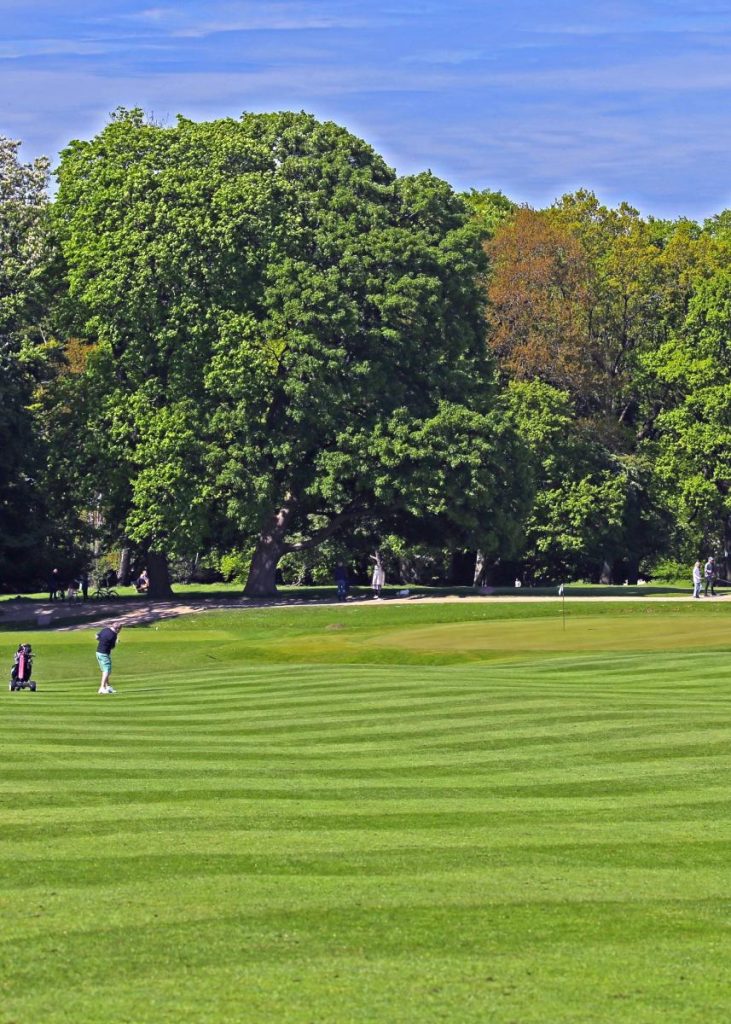
The resurface of Stokkerup pheasants’ fields
As they removed dirt and cut the grass for the fairways, building Copenhagen Golf Club’s 18 holes from 1926-1928, the history of the Hermitage field was brought to light. The construction of the golf course conjured the fields of the pheasants of Stokkerup. High raised fields from the area of the Stokkerup pheasants are visible. Each pheasant had one raised field, 15-16 meters broad and highest at the middle, which secured the harvest during dry as well as wet summers. During the dry summer, a slight moisture remains on the bottom of the fields, where the crops benefit. During wet summers, the crops on the top are given the best opportunities as they avoid flooding. In this way the pheasants of Stokkerup managed drought as well as flood.
Two of the high raised fields can be seen when the sun is low in the horizon at the 17th fairway and green.
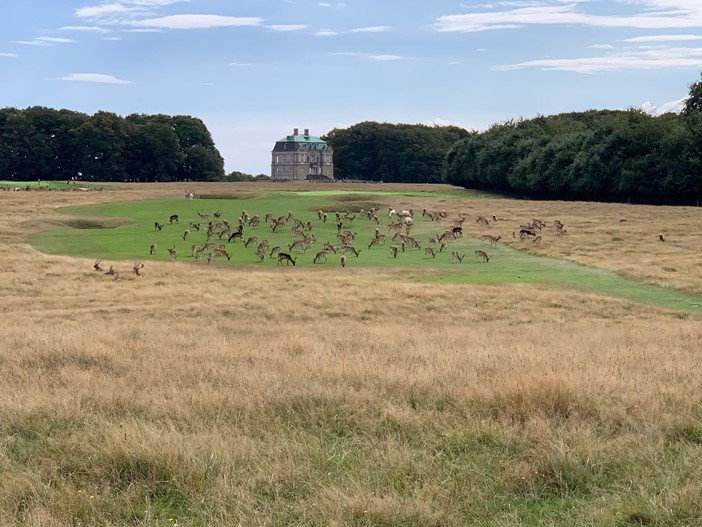
The deer take over Hermitage field
The crown deer arrives in Denmark 10,000 years ago and becomes our biggest wild mammal. The deer, the male, measures 140 centimeter, has a weight of 230 kilos and grows a huge antler every year. The female is a bit smaller and often stays with the calves in the Southern part of the deer garden. The male deer in the Northern. They only meet during the heat period during September and October. In total, there are approx. 300 crown deer, the remains are exported as there is a huge demand for the deer garden’s crown deer all over the world, some of them today grazing in New Zealand.
The crown deer is normally dark brown, but we also see white crown deer in the deer garden. King Christian the 6th got 12 white crown deer from prince August of Sachsen in 1737. The white crown deer we see today are descenders, restricted to 15-20 deer.
Neither of the deer garden’s white crown deer or fallow deer are albinos with their grey muzzles and grey-blue eyes, not red as real albinos. They are a variant of the common crown deer.
The fallow deer disappeared from our latitude during the Ice Age but was re-introduced as an animal of beauty around the year 1200. The deer is about 95 centimeter up to its shoulder and weighs 100 kilos, the female being slightly smaller. Fallow deer can be black, white, or brown. The mirror is white with three vertical black stripes, visible as a number 111. The fallow deer has its heat from October to November. Ca. 1600 fallow deer live in the deer garden.
The Sika deer’s origin is East Asia, imported to the deer garden in 1923. The deer measures up to 80 centimeters to its shoulder and weighs 50 kilos. The Sika deer is different to the fallow deer, it’s darker and without the black stripes creating the number 111 at the fallow deer. The heat period is from September to January. There are among 100 Sika deer in the deer garden.
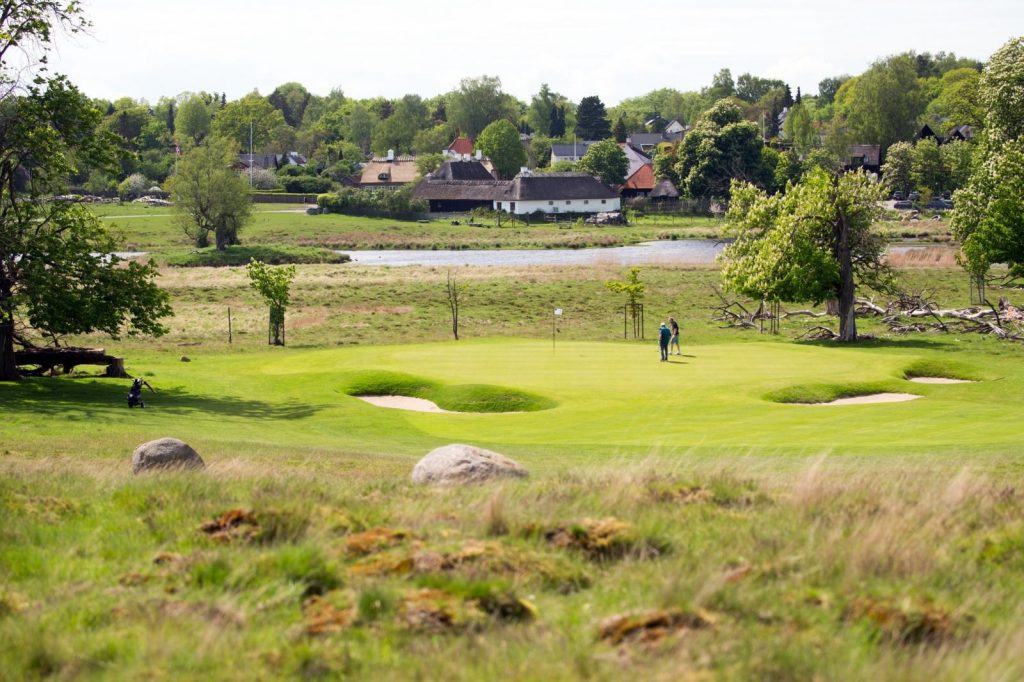
Yellow meadow ants building anthills near hole 12
The yellow male meadow ant has a yellowish color, thus named yellow meadow ant. The female ant is browner of color.
The male is smaller than the female, 2-4 millimeter, while the female is more than double of seize, 6-8 millimeter. The yellow meadow ant is a bit smaller than an average ant.
The yellow meadow ants build the anthills in areas with acces to sun. The slope through the green at hole 12 suits them fine. They seldom approach the surface and stay under the ground, unless when they escape for mating.
The yellow meadow ants can claim they invented modern farming. Yellow meadow ants live all their life under the ground, where they keep aphids as milking cows. The aphids are fed from roots, excreting sucker-filled liquid called honey dew. The honey dew is a meal for the yellow meadow ant. A self-propellant engine within agriculture.
Yellow meadow ants like all other sort of ants are coldblooded. They get all their warming from surroundings, which is why they keep a low profile in the winter season. When cold outside, the farming is set on hold.
There are 25000 ants in each anthill. Marking an area of 5×5 meters from the path down to the 12th green, we find approx. 20 anthills. We have 0,5 million yellow meadow ants at these 24 square meters alone.
The world number one restaurant, famously Noma, has served the yellow meadow ant on the menu.
